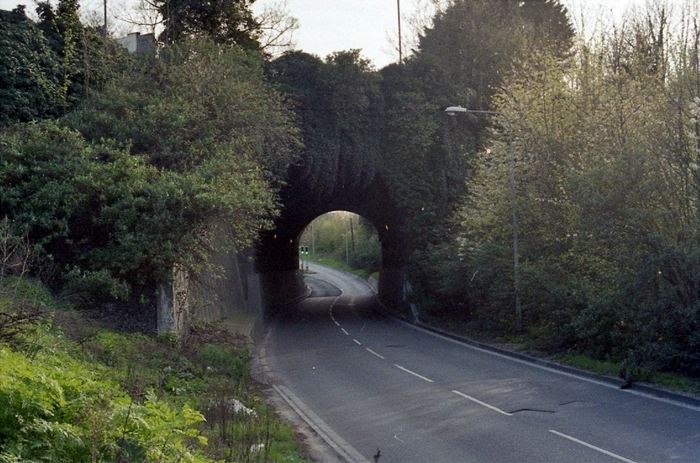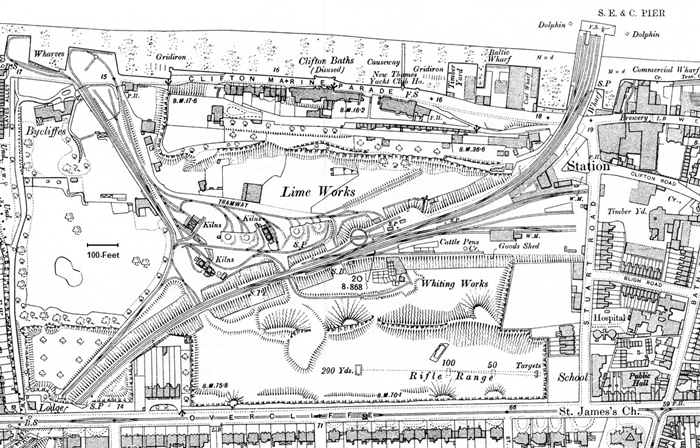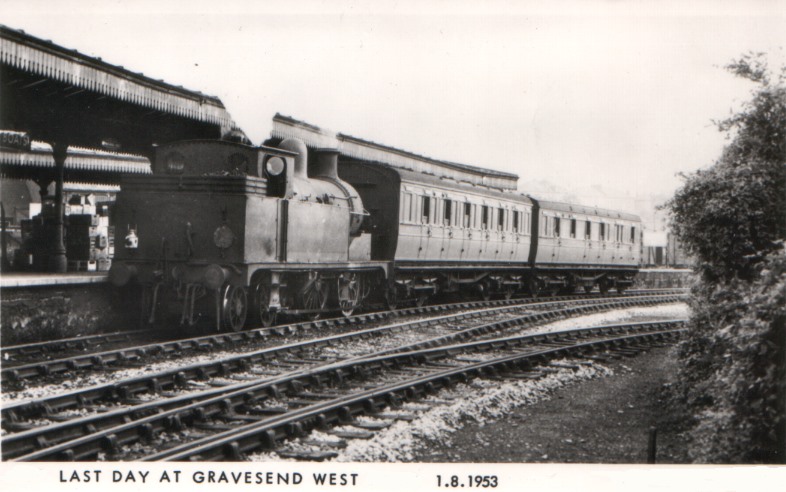
Gravesend West Street station was once a significant terminus on the southern bank of the Thames, playing a pivotal role in the rail history of Kent. Built in an era marked by competition among rail companies and a booming demand for rail transport, the station served as a testament to the ambitions and evolution of railway networks in southeastern England.
Early Ambitions and Construction
The late 19th century was a transformative period for railway expansion in Britain. The London, Chatham and Dover Railway (LCDR), in its bid to outmaneuver its rival, the South Eastern Railway (SER), sought to extend its network to serve burgeoning commuter towns and industrial centers. Gravesend, an important river port with a thriving maritime trade and popularity as a leisure destination, was seen as a strategic endpoint for a new railway line.
Approved in 1883, construction of the Gravesend West Branch Line began soon after, culminating in the opening of Gravesend West Street station on 17 April 1886. The project faced significant engineering challenges, including constructing embankments and viaducts to navigate the marshy terrain and dense urban areas. The station was strategically located near the Thames to capitalize on the passenger services connecting with steamboats and river traffic, boosting both rail and river tourism.
Design and Layout
The design of Gravesend West Street station was a reflection of Victorian engineering prowess. The station featured a grand train shed made of iron and glass, which covered its two main platforms. This shed provided protection for passengers against the elements and gave the station an imposing appearance. The exterior was adorned with brick facades punctuated by arched windows and decorative cornices, embodying the aesthetic style of the period.
Inside, the station boasted a spacious ticket hall, waiting rooms with gas lighting, and a refreshment room that catered to travelers during their journey. The station also had ample facilities for freight handling, including sidings, goods sheds, and a turntable. The adjoining goods yard was a hive of activity, supporting local industries with shipments of coal, timber, and other commodities.
The Station’s Golden Era
During its prime, Gravesend West Street station thrived as a gateway for both commuters and leisure travelers. Regular passenger services connected Gravesend with London Victoria, passing through the scenic Kent countryside and stopping at key junctions such as Swanley. The station was well-positioned to handle the influx of tourists from London, who flocked to Gravesend for its riverside attractions, including the Promenade Gardens and Rosherville Gardens, a popular Victorian amusement park.
Steamboat services were a notable feature at this time, with the station enabling seamless transfers for passengers traveling by river. This combined rail-and-boat service offered a unique and leisurely travel experience, cementing Gravesend’s reputation as a resort town for day-trippers.
Decline and Challenges
The station’s success was short-lived due to a series of setbacks that began in the early 20th century. Improved competition from Gravesend Central (now known simply as Gravesend station) provided quicker and more direct routes to London, siphoning away passengers. The rise of automobile ownership further impacted rail travel, shifting the public’s preference toward road transport.
Economic difficulties during the interwar period and the widespread disruptions caused by World War II only exacerbated the station’s decline. The war saw a temporary revival in freight traffic due to wartime logistics but caused damage to rail infrastructure. Post-war austerity measures and the focus on modernizing more profitable lines left Gravesend West Street in a precarious state.
Closure and Final Years
The last regular passenger services ceased in August 1953, a poignant moment marking the end of an era. The station continued operating solely as a goods terminal for some time, handling freight for local businesses. However, the dwindling volume of goods traffic and the expansion of road-based freight transport meant that even these services were unsustainable.
In 1968, the final chapter was written as the station was officially closed. The infrastructure soon began to decay, with the impressive train shed and other structures being dismantled in the years that followed. The tracks were lifted, and parts of the former station site were repurposed for industrial and commercial development.
Modern Legacy
Today, little remains of the grandeur that once defined Gravesend West Street station. Urban development has covered most of the former station footprint, erasing much of the physical evidence. However, some remnants can still be found if one knows where to look: sections of the old trackbed can be traced, and subtle hints of the station’s past exist in old boundary walls and railway embankments.

Rosherville Tunnel © David Glasspool
For railway enthusiasts and local historians, the story of Gravesend West Street station represents more than just the tale of a lost railway. It embodies the economic and social shifts of the 19th and 20th centuries, the fierce competition that drove railway expansion, and the impact of changing technology on public infrastructure. The station’s legacy endures in the collective memory of the town and in historical records that capture its role in shaping Gravesend’s identity as a bustling port town and leisure destination.
The Gravesend West Branch Line remains a source of fascination, embodying the rise and fall of Britain’s regional railway lines, and serves as a reminder of the transformative power of the railways during the Victorian and Edwardian eras.
External Links
https://en.wikipedia.org/wiki/Gravesend_West_railway_station
http://www.disused-stations.org.uk/g/gravesend_west_street/
https://www.kentrail.org.uk/Gravesend%20West.htm



